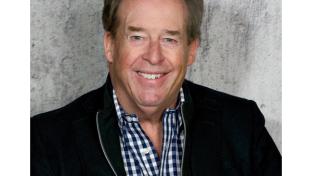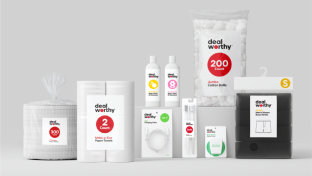Tips for Incorporating Sound into the Customer Experience
In-store music is a major driver of the customer shopping experience. Music can impact shoppers’ moods, with 75% noting they felt more relaxed in a retail store that plays music.
In fact, research from Mood Media found that 77% of Americans are more likely to wait in line to purchase if engaging music is playing. The selection and timing of music retailers choose to play for shoppers can significantly influence customer engagement with the brand, potentially impacting their overall perception and experience for better or worse.
Undoubtedly, sound is a key consideration for retailers when building the in-store experience. This includes developing brand-aligned listening channels and ensuring legal compliance. The process behind the music that customers hear while shopping is far more complex than plugging in a phone and streaming the retail manager’s personal playlist.
Here are key factors that retailers should consider to create welcoming environments that encourage longer visits and ultimately, drive sales.
1. Consider a reputable commercial music provider to manage licensing, security and more
If you’re planning to play music in your store, you need to do so in a compliant way. No matter your business size, it’s illegal to stream music from a personal streaming account for commercial use and it can result in legal issues and fines. In order to play licensed music, you have to get licenses from Professional Rights Organizations (PROs).
In the U.S., the main PROs are ASCAP, BMI and SESAC and each of them represents different songwriters, composers and music publishers. The terms and license fees can depend on a variety of factors including the size of your business, the type of business, how many locations you have and how often you play music. Negotiating terms, making timely payments, keeping extensive records and managing renewals can be complex and time-consuming for retailers who would rather focus on driving their stores’ sales. Instead, it's more practical for businesses to partner with a music streaming service that caters to businesses.
These services typically have existing agreements with PROs, and the cost of licensing is included in their subscription fees. They simplify the process for retailers and ensure compliance and security!
2. Ensure your sound experience aligns with your brand ethos
Research shows that music generally contributes to a better in-store experience, with 84% of Americans agreeing if a store is playing music the shopping experience is more enjoyable. That said, it is critical that the sound choices you make match your brand voice and feel authentic to your customers. It is more than just playing catchy tunes that shoppers can sing along to as they peruse the shelves. According to a study by HUI Research, for retail clients, overall sales increased by more than 9% by playing music that matches the brand.
The music you play in-store becomes the soundtrack to your brand. Everything from genre to lyrics of the songs played in store should be considered. If a song, artist or style of music doesn’t match what you stand for as a brand, think twice about streaming it in your business. I’ve heard from my clients directly the importance of music that aligns with their brand. Not having to monitor for explicit lyrics or worry about songs that don’t fit the brand sneaking into their playlist is key. Further, they’ve noted that when music is brand-aligned, the store environment feels more professional and vibrant.
3. Make it easy on store managers to deliver a superior experience
It can be cumbersome to curate hundreds of songs for multiple playlists and then continue to keep these playlists updated. To ease this burden on store managers while ensuring an impeccable shopper experience, consider working with a professional musicologist, someone who can ensure what your shoppers hear aligns with the moment and your brand voice.
Musicologists are legends in their field and know music inside and out. Some of the commercial music services have musicologists on staff and work closely with you to curate stations for your business that align with the brand, a mood, and so much more. This tailored human touch combined with the use of the right algorithm to further perfect a brand-specific experience is the best of art and science. With this blend of skill and technology, a brand can easily provide a thoughtful experience without sacrificing the time on curation that business leaders don’t have to give.
A robust platform offered by a commercial music provider to manage and control the content also helps consolidate a store manager’s many disparate tasks to create a seamless in-store experience. This includes changing stations, adjusting schedules for music, creating and incorporating messaging for in-store announcements, and more - considering one, multiple or all locations of a store at once. A centralized dashboard gives you the ability to keep the tunes going without losing efficiency.
4. Be contextually relevant with your in-store entertainment
To create the best possible in-store experience, context is everything. The psychology of music is complex and what works with a consumer from one moment to another can shift quickly, so an agile approach to in-store sound that considers contextual factors such as surroundings, time of day and the weather will garner best results. Factors such as genre, tempo, volume and more all go into creating the in-store experience and can impact consumer behavior directly.
A brand sound analysis conducted by musicologists factors in not only the brand essence, but also looks at business location, and considers seasonality and climate to determine the right sound experience at any given moment to inspire positive retail behaviors. On a rainy day, a business owner should consider what would make shoppers feel most comfortable. The sound of coffee house acoustics, for example, would likely feel like a warm blanket and a respite from the chilly, wet outdoors.
In-store sound, while complex, can be seamlessly managed with the right expertise, transforming it into a powerful tool to foster deeper connection with customers and increase brand engagement and loyalty. Particularly as we head into the new year, brands have the opportunity to create a sound experience that not only aligns with their core identity but also drives business success.
Radhika Giri is senior VP for emerging business, SiriusXM.







